Refine search
Actions for selected content:
27 results
4 - The Virgin Mary
- from Part I - Models of Sanctity
-
-
- Book:
- The Cambridge Companion to Counter-Reformation Sanctity
- Published online:
- 12 December 2025
- Print publication:
- 08 January 2026, pp 72-89
-
- Chapter
- Export citation
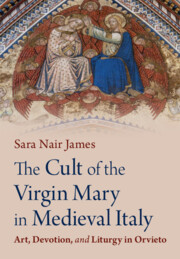
The Cult of the Virgin Mary in Medieval Italy
- Art, Devotion, and Liturgy in Orvieto
-
- Published online:
- 24 July 2025
- Print publication:
- 24 July 2025
Chapter 14 - Religion
- from Part II - Social Contexts
-
-
- Book:
- Sean O'Casey in Context
- Published online:
- 23 June 2025
- Print publication:
- 10 July 2025, pp 150-158
-
- Chapter
- Export citation
Introduction
-
- Book:
- Seamus Heaney and Catholicism
- Published online:
- 20 February 2025
- Print publication:
- 27 February 2025, pp 1-30
-
- Chapter
- Export citation
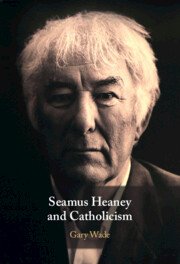
Seamus Heaney and Catholicism
-
- Published online:
- 20 February 2025
- Print publication:
- 27 February 2025
Chapter 12 - The Bible
- from Part III - Religious, Theological, and Philosophical Contexts
-
-
- Book:
- Gerard Manley Hopkins in Context
- Published online:
- 16 January 2025
- Print publication:
- 16 January 2025, pp 103-109
-
- Chapter
- Export citation
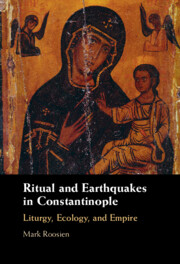
Ritual and Earthquakes in Constantinople
- Liturgy, Ecology, and Empire
-
- Published online:
- 05 December 2024
- Print publication:
- 14 November 2024
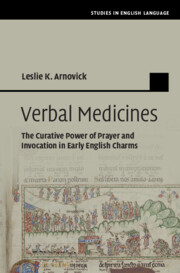
Verbal Medicines
- The Curative Power of Prayer and Invocation in Early English Charms
-
- Published online:
- 29 November 2024
- Print publication:
- 07 November 2024
Chapter 4 - Earthquakes and the Saints
-
- Book:
- Ritual and Earthquakes in Constantinople
- Published online:
- 05 December 2024
- Print publication:
- 14 November 2024, pp 108-134
-
- Chapter
- Export citation
Chapter 3 - Invoking the Name of Mary
-
- Book:
- Verbal Medicines
- Published online:
- 29 November 2024
- Print publication:
- 07 November 2024, pp 111-150
-
- Chapter
- Export citation
Robert Southwell and the ‘Empresse of the skyes’: A Reading of ‘The Sequence on the Virgin Mary and Christ’
-
- Journal:
- New Blackfriars / Volume 105 / Issue 2 / March 2024
- Published online by Cambridge University Press:
- 26 February 2024, pp. 153-168
- Print publication:
- March 2024
-
- Article
-
- You have access
- Open access
- HTML
- Export citation
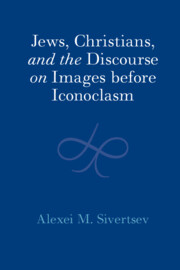
Jews, Christians, and the Discourse on Images before Iconoclasm
-
- Published online:
- 01 February 2024
- Print publication:
- 08 February 2024
I.25 - Alchfrith, Prayer to Holy Mary
- from Eighth Century
-
- Book:
- The Cambridge Anthology of British Medieval Latin
- Published online:
- 11 January 2024
- Print publication:
- 01 February 2024, pp 296-298
-
- Chapter
- Export citation
Chapter 13 - Indigenous Peoples and Catholicism in Eighteenth-Century Mexico City
- from Part III - Belief Systems
-
-
- Book:
- Latin American Literature in Transition Pre-1492–1800
- Published online:
- 25 November 2022
- Print publication:
- 08 December 2022, pp 195-208
-
- Chapter
- Export citation
In defence of Mary's consent: a response to Hereth
-
- Journal:
- Religious Studies / Volume 59 / Issue 4 / December 2023
- Published online by Cambridge University Press:
- 27 September 2022, pp. 801-816
- Print publication:
- December 2023
-
- Article
- Export citation
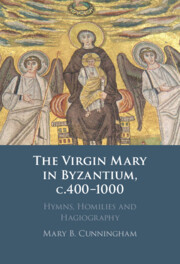
The Virgin Mary in Byzantium, c.400–1000
- Hymns, Homilies and Hagiography
-
- Published online:
- 20 August 2022
- Print publication:
- 08 September 2022
-
- Book
-
- You have access
- Open access
- Export citation
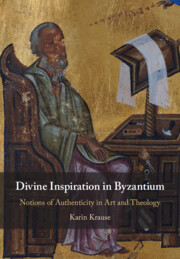
Divine Inspiration in Byzantium
- Notions of Authenticity in Art and Theology
-
- Published online:
- 16 July 2022
- Print publication:
- 09 June 2022
Chapter 4 - The Girl Player, the Virgin Mary, and Romeo and Juliet
- from Part I - Players
-
-
- Book:
- Playing and Playgoing in Early Modern England
- Published online:
- 10 March 2022
- Print publication:
- 17 March 2022, pp 77-98
-
- Chapter
- Export citation
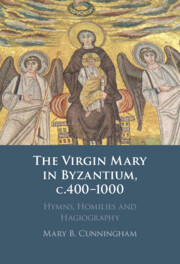
The Virgin Mary in Byzantium, c.400-1000
- Hymns, Homilies and Hagiography
-
- Published online:
- 29 October 2021
- Print publication:
- 11 November 2021
-
- Book
- Export citation
10 - Icons in the Adriatic before the Sack of Constantinople in 1204
-
-
- Book:
- Byzantium, Venice and the Medieval Adriatic
- Published online:
- 26 March 2021
- Print publication:
- 15 April 2021, pp 245-275
-
- Chapter
- Export citation
